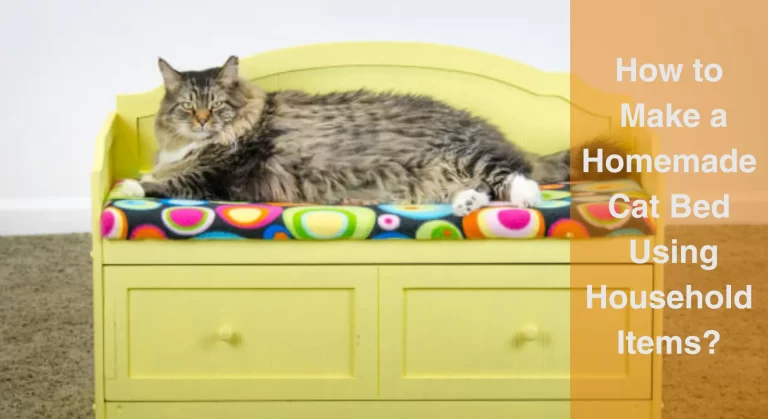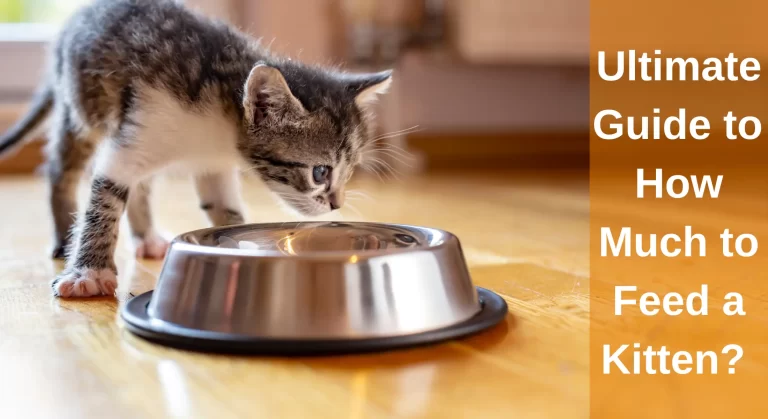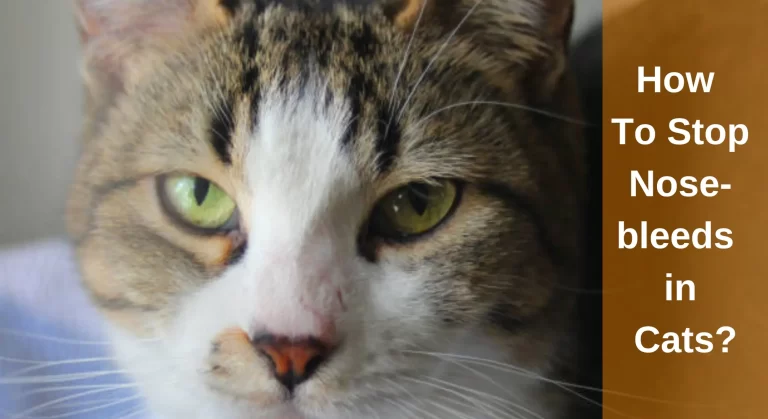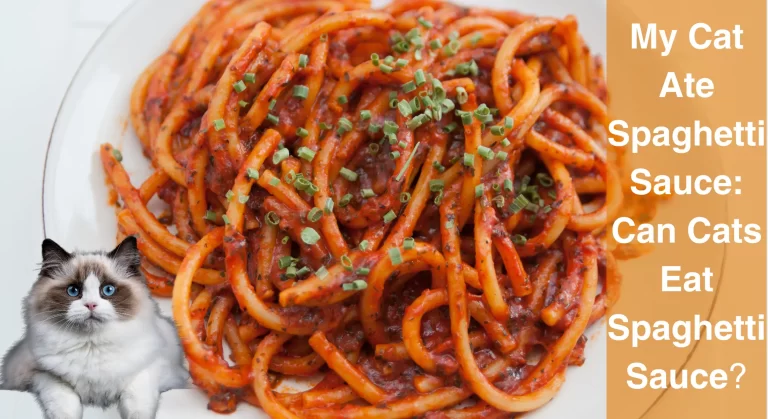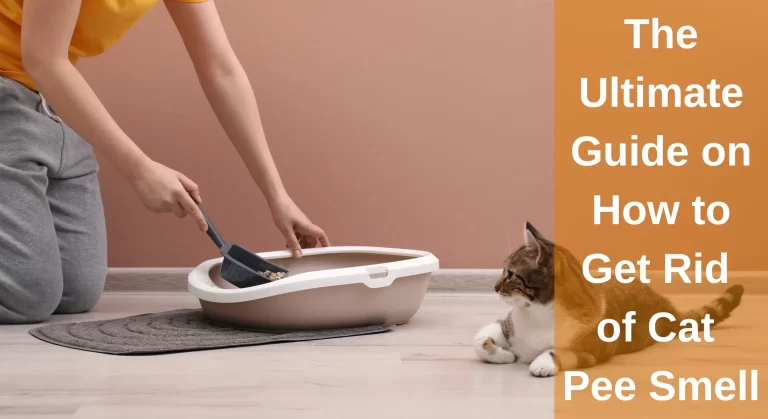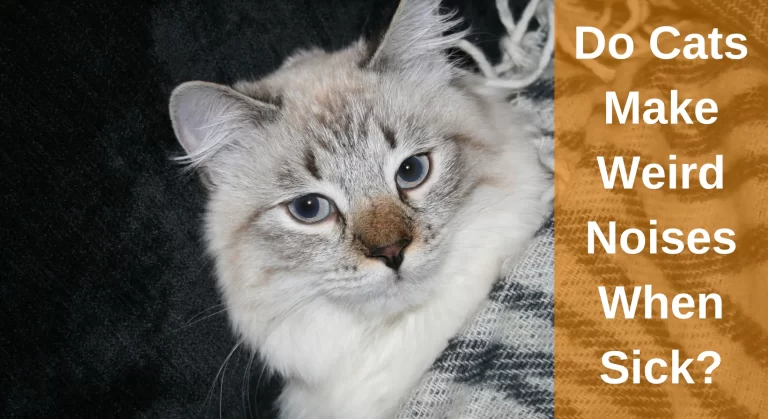Why Is My Cat Has Dry Nose And Not Eating? [Answered]
A cat’s nose is typically moist, as it helps them to detect the scent and keep its nasal passages hydrated. Many people believe that a dry cat’s nose indicates trouble. Cat owners frequently become concerned when their feline companions’ noses aren’t damp and refuse to eat. This is one of the more frequent issues that prompt cat owners to visit a veterinarian.
Most of the time, it is true that cat owners feel their cats’ noses should always be cold and wet. You may be curious about what changed and whether these changes indicate a health issue for your pet buddy.
Cat Has Dry Nose And Not Eating often indicate a respiratory infection, but they can also be markers of dehydration or malignancy. You should evaluate the flexibility of your cat’s skin and the thickness of the saliva to look for signs of dehydration.
This article will cover most of the things you should know about your cat’s dry nose, how to moisturize a cat’s nose and if it needs to be taken seriously.
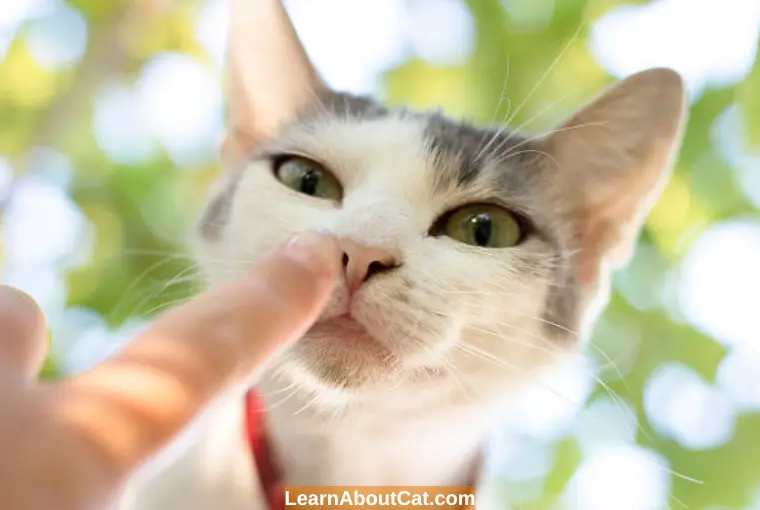
What Does It Mean If Your Cat Has a Dry or Warm Nose? Is there a problem?
Your cat’s nose cannot be used to assess his general health. A cat’s nose might be considered normal if it’s warm, dry, or moist. A cat’s nose, however, can be impacted by a few circumstances.
A cat with a dry nose is frequently either dehydrated or experiencing some form of fever. Although some healthy cats have warm, dry noses, there is what you could call a vague association between a cold, wet nose and excellent health.
But measuring your cat’s temperature using a rectal thermometer is the most effective way to determine her health.
How Can I Identify If My Cat Has a Dry Nose? Symptoms and Causes of Dry Nose
Check your cat for any of the following signs:
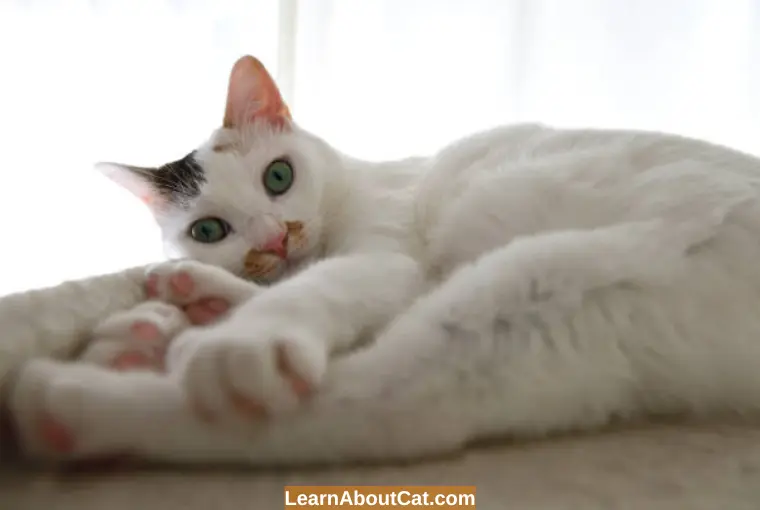
- Skin tissue that is flaky, crusty, bloated, or injured
- Unusual nasal discharge
- Having trouble breathing
- a warm body
Crusty, dry skin can be more than simply a dermatological problem “It might be a sign of blisters or sores that break open and leak. An autoimmune condition like the Pemphigus complex may bring these on.
The cat’s face, nose, and ears initially develop red skin patches due to this illness.” Since cats like jumping, climbing and grappling, scratches and bumps may result in swelling or other nose damage, but on the other hand, they may also indicate a foreign item.
Along with a dry nose, you can also notice several other unsettling symptoms, including:
- Nasal dripping
- breathing problems
- Skin that is flaky, crusty, bloated, or damaged
- fever and warm skin
You must immediately take your cat to the vet if they exhibit any of these symptoms. Be aware that depending on the underlying reasons, this therapy strategy will be changed by a vet.
Intresting Reading: A Guide To – How To Heal Dry Cat Paw Pads?
Reasons Why Cat Has Dry Nose And Not Eating?
Your cat’s dry nose is not a symptom of sickness. However, if your cat is resting the entire day and not eating much, it may indicate a medical issue. There are many different explanations for these symptoms, so I’ll review some of the most prevalent ones below.
A healthy cat’s nose may feel moist or dry at different times of the day based on several other circumstances, and it may be wet or dry. What is typical for your cat could not be specific for another cat because some cats naturally have drier noses than others. Here are some reasons why your cat has a dry nose and does not eat.
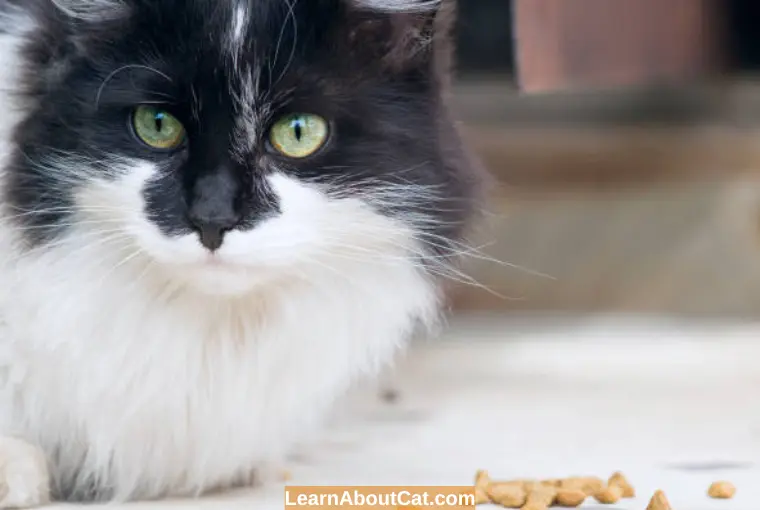
1. Dehydration
Dehydration can occur when a cat does not consume enough water or loses fluids due to vomiting, diarrhea, or excessive urination.
A dry nose is a common sign of dehydration in cats. However, other disease symptoms, such as fatigue and appetite loss, frequently coexist with dehydration.
If your cat generally performs well, you shouldn’t automatically assume that its dry nose is caused by dehydration, but you shouldn’t ignore it either.
A dehydrated cat may have a dry nose and appear lethargic, weak, and uninterested in eating or drinking. If your pet remains in this condition for two days and does not eat or drink, visit the DVM soon.
2. Respiratory Illness
An upper respiratory infection can cause a cat’s nose to become dry and crusty, making it difficult for them to breathe and smell. This condition can also cause a loss of appetite, lethargy, and sneezing.
Your cat may have a respiratory condition if you frequently see them with runny noses and watery eyes. Cats can get a variety of respiratory diseases, but an upper respiratory infection is one of the most prevalent (URI). Similar to how different viruses or bacteria bring on the common cold.
Because URIs affect a cat’s upper airway, you may notice sinuses, nose, and throat symptoms. Appetite vanishes, and watery eyes and nose become dry. Additionally, you can see that your cat coughs after consuming water.
Also, Check Out: My Cat Has a Fever and is Lethargic: Sings of Fever in Cats
3. Sunburn
Believe it or not, cats can get sunburned! Cats may get sunburned just like people can. Cats with white or light-coloured noses are particularly susceptible to sunburn, which can cause their noses to become dry and cracked.
Many cats like to relax in the sunlight. Long-term sun exposure can result in sunburn, which can cause the nose to become red, dry, scabby, or peeled.
UV light damage over time can result in skin cancer and colour changes. Call your veterinarian immediately if you suspect sun damage to your cat’s nose.
4. Cancer
Cancer can cause a range of symptoms in cats, including a dry nose, weight loss, and loss of appetite. Some types of cancer can also cause vomiting, diarrhea, and difficulty breathing.
Some diseases, such as lymphomas, sarcomas, and carcinomas, may even impact a cat’s nose. If your cat develops a sudden and unexpected nose condition, it’s critical to consult your veterinarian immediately.
Take your cat in for yearly or biannual checkups as advised by your veterinarian to catch any little changes that may be present.
Other Causes of a Dry Nose in Cats
- Dry Air: Dry air can also cause a cat’s nose to become dry and cracked. This is especially true in the winter months when the air in our homes tends to be drier due to indoor heating.
- Dental Issues: Dental problems, such as tooth decay, gum disease, and oral infections, can cause pain and discomfort, making it difficult for a cat to eat and drink. Cats with dental problems may also have bad breath, drool excessively, and paw at their mouth.
- Allergies: Cats can develop allergies to various environmental and food allergens, causing symptoms such as a dry nose, sneezing, and itchy skin. Food allergies can also cause digestive upset and loss of appetite.
- Digestive Issues: Digestive problems, such as inflammatory bowel disease, pancreatitis, and intestinal blockages, can cause a cat to feel nauseous, leading to a loss of appetite and dehydration. These conditions can also cause vomiting, diarrhea, and abdominal pain.
- Trauma: Despite our best efforts to keep cats safe, there is always a danger that your feline friend will suffer trauma. Burns, bug bites, and unintentional accidents are examples of this. Dryness, redness, pimples, and nose swelling may result from this.
Also Read: What Are Emotionally Traumatized Cat Symptoms
When Should I Worry About My Dry Cat Nose?
Your cat may be very dehydrated, and in need of veterinary care if its nose is dry, exhibits indications of lethargy, or has sunken eyes.
If your cat has been vomiting, having diarrhoea, or not eating well for a time, dehydration may frequently result. If your cat has a dry nose, it’s conceivable that he also has a high fever.
Call your veterinarian immediately if you are worried that your cat is dehydrated or ill. In cats, dehydration and fever frequently go hand in hand.
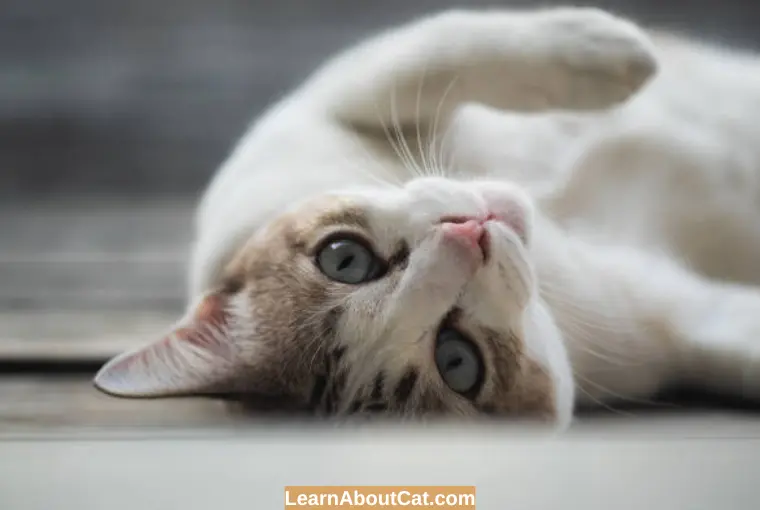
Home Remedies and Prevention: How Can I Help My Cat’s Dry Nose?
Hydration: One of the most excellent methods to treat your cat’s dry nose is to increase their water consumption. Make sure your cat has access to clean, fresh water at all times and you can also use a water fountain to encourage them to drink.
Check Out: How to Get Your Cat to Drink More Water
Increase Wet Food Consumption: Add a bit of water to your cat’s wet food daily, or flavouring your cat’s water with some meat broth to make it smell nice. Changing to wet food is also beneficial because it contains significantly more water than dry food.
Feeding your cat warm and aromatic foods like chicken broth or tuna to stimulate their appetite
Environmental Management: You may also need to make changes to their environment to reduce their exposure to allergens. This can include using air purifiers, avoiding certain plants or cleaning products, and switching to hypoallergenic bedding.
Adding a humidifier to your home can help increase the moisture in the air, which can help relieve your cat’s dry nose.
Cleaning your cat’s nose gently with a damp cloth to remove any crusts or debris that may be obstructing their sense of smell
Note: However, if a sudden change in your cat alarms you, it is always preferable to consult your veterinarian. Naturally, it could be nothing, but receiving a professional assessment will soothe your concerns and guarantee that your cat gets the care it requires.
Frequently Asked Questions
Is it normal for your cat’s nose to change colour?
Your cat’s nose can occasionally even change colour. Freckles commonly appear on the gums, lips, eyelids, ears, and noses of ginger cats or orange tabbies. This benign disorder is referred to as lentigo simplex. As cats age, they frequently get nose freckles, although they are harmless and not hazardous.
Does a wet cat nose always mean the cat has UTI?
If your cat’s nose is wetter than usual, she probably has an upper respiratory infection (URI), even if she isn’t displaying any other symptoms. You don’t need to seek your vet’s quick treatment in such a situation.
An extremely wet nose might indicate fluid overload if your cat receives injectable fluids, such as those for renal failure. If your cat is given injectable fluids, its nose must be closely watched. If fluid overload worsens, breathing problems that might be fatal can develop.
Why is Cat has a dry nose and is lethargic?
Lethargy and poor appetite are very common side effects of dehydration and fever in cats. A cat who appears sick has a dry nose, is lethargic, or has a poor appetite should be seen by a veterinarian.
Why is my cat’s nose dry and cracked?
Having a dry, cracked nose on your cat indicates that it might have some sort of skin issue, so you should take him to the vet for a checkup.
What can I put on my cat’s dry, cracked nose?
Some cats can be helped by petroleum jelly or petrolatum skin protectant when they have a mildly dry nose.
What can I put on my cat’s dry nose?
You can apply moisturizer to your cat’s dry nose, but you should consult your veterinarian first.
Veterinarians usually recommend Aquaphor or Kerasolv as moisturizer creams.
Can dental problems cause a cat to stop eating?
Yes, dental problems such as tooth decay or gum disease can cause a cat to stop eating. It is essential to take your cat for regular dental check-ups and maintain proper dental hygiene.
Final Words!
A dry nose and not eating in cats can be worrying symptoms for cat owners, and it can be caused by a variety of factors, ranging from minor issues to more serious underlying medical conditions. It is essential to identify and address the underlying cause to ensure that your cat remains healthy.
In most cases, simple home remedies and veterinary treatment can help alleviate the symptoms and restore your cat’s appetite. However, if the symptoms persist, it is essential to seek immediate veterinary attention.
Related Posts:
Who is Isabella?
My name is Isabella, and I am a dedicated and knowledgeable cat enthusiast. With years of experience caring for cats and a deep love for felines, I made a mission to help other cat lovers navigate the challenges of cat ownership.

